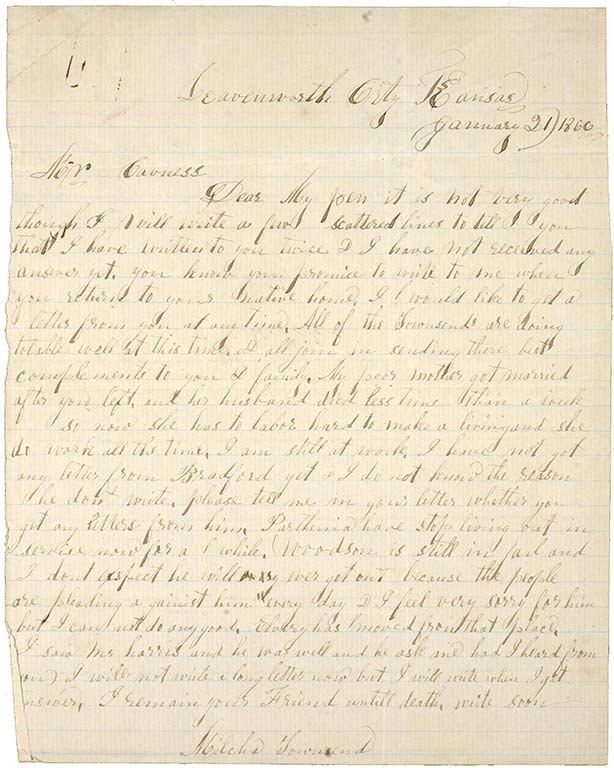The Townsend Heirs
In 1856, Samuel Townsend, a wealthy plantation owner in Madison County, Alabama, took the usual step of leaving his property to his five sons, five daughters, and two nieces, only it wasn't usual at all -- because they were also his slaves.
Having seen his brother, Edmund, attempt the same thing and fail when the extended family fought such a move, he hired lawyer S. D. Cabaniss to make sure he had an iron-clad will that would provide for the manumission (that is, freeing) and financial support of dozens of enslaved people, direct heirs and their families, detailed father down the page here.
Cabaniss was tasked with carrying out Townsend's wishes, including finding a place outside Alabama to settle the heirs. Unfortunately, litigating the case was a long and costly process, such that very little money was left in the end. Cabaniss spent decades serving as the point of contact for this large group of formerly enslaved people, generally fielding requests for money.
Click on the items below to view the image and information about the document, including a transcription.
The 40 people freed by Townsend's will include his or his brother's children (class 1 heirs, here in bold) as well as his children's mothers and families and the children of three deceased women (class 2 heirs).
- Westly and Caroline; plus their mother, Rainey, and her children Jane, Milly, and Freeman, and Westly's wife Jane and their infant child
- Elvira and Thomas; plus their mother, Hannah, and her children Malinda and Armstrong, and her husband, Dick
- Joseph and Susan; plus their mother, Celia, and her infant child
- Milcha; plus her mother, Lucy, and her children Warner and Joseph
- Willis, Osborn, and Parthenia; plus their deceased mother Winney's child Austin
- Rachel and her children Peggy, Jane, and Mary, and Peggy's child Bolling
- Martha and her child William
- Deceased mother Emily's children Martin, Henry, Sylvanus, and Amos
- Edmund Townsend's children Elizabeth and Virginia; and Woodson
Notes:
Woodson is mentioned just after the list of class 1 heirs (expressly 12 total) but before the list of class 2 heirs (expressly 27 total), and he is accounted for in neither total. He is discussed just after Elizabeth and Virginia (class 1 heirs) because he has likewise come from Samuel's brother Edmund's estate. However, though Woodson is described as having a light complexion, indicating he is mixed race, he is never declared to be Edmund's son. Given that he is not Samuel's blood relation and was not explicitly listed with class 1, he is presumably a class 2 heir.
Regarding Rainey, Hannah, Celia, Lucy, and the late Winney, it is not possible to know the nature of his relationship with these women who gave birth to these children -- especially taking complex notions of consent into consideration -- only that he also sought to free them and their other children. There are many ways to interpret the presence of women who are not mothers to his direct heirs, that is, Rachel, Martha, and the late Emily. If they are here because they share something in common with the others, each may have had a sexual relationship with Samuel Townsend, potentially even shared children that were by then deceased.
Questions to consider:
- How do Samuel's efforts to improve the lives of his children (and their loved ones), as seen in these documents, challenge the usual narrative of a slave owner? And in what ways do they also uphold the status quo?
- How does the correspondence from the the heirs communicate -- directly and indirectly -- the challenges faced by mixed-race people navigating the Reconstruction Era?





